
Hosted by That Artsy Reader Girl
As we have the option to discuss non-bookish stuff for this week’s freebie, today I’m going to gush about one of my favourite hobbies: visiting museums.
 I was homeschooled for several years growing up, and we sometimes visited local museums as part of our education. Those early experiences taught me not only to love museums as well as learning in general. It’s exciting to be so close to paintings, pottery, or other items that are hundreds, thousands, tens of thousands, or even millions of years old. For a brief moment, it almost feels like stepping into a Time Machine and actually going to visit those places!
I was homeschooled for several years growing up, and we sometimes visited local museums as part of our education. Those early experiences taught me not only to love museums as well as learning in general. It’s exciting to be so close to paintings, pottery, or other items that are hundreds, thousands, tens of thousands, or even millions of years old. For a brief moment, it almost feels like stepping into a Time Machine and actually going to visit those places!
Here are ten things I love about museums:
1) Reading the plaques
You can learn so many interesting details about an item this way.They can include funny stories about the creator or unusual facts about the piece. For example, sometimes artists have reused old canvases to create new paintings, but modern scanning techniques can still kind of tell what was originally painted there.
2) Windows into the past
Did you know that watermelons used to have much thicker rinds and whiter flesh? This painting by Giovanni Stanchi shows a cut watermelon that doesn’t look much like our modern fruit at all. It’s a little detail about the past that I never would have known had I not seen that painting.
3) Likeminded people
Not everyone is interested in science, art, or history, so I relish the opportunity to be surrounded by people who share these interests regardless of if or how much I talk to them.
4) Peace and quiet
So many public places are noisy and overstimulating that it makes me smile to enjoy a quiet place that doesn’t have any flashing lights or heavy scents.
5) Truth
Yes, sometimes our understanding of certain things changes as new evidence is uncovered, of course, but that’s not what I’m talking about. One of the downsides of social media is how easy it is for half truths and sometimes completely made up stories to circulate there. When I’m at a museum, I can generally be reassured that what I’m looking at or reading about actually happened. It’s not photoshopped or a LLM hallucination. That painter really did exist. This fossil really does represent a living creature that lived X number of years ago.
6) A bonding opportunity
There’s nothing like visiting a museum with a loved one and talking about what you find there. I have so many happy memories of doing this over the years from everyone from my preschool-aged nephews to my grandparents and everyone in-between.
7) Beauty
Museums are filled with so many beautiful old paintings, ceramics, outfits, swords, fossils, displays, and other things to enjoy. I don’t know about all of you, but I need more beautiful things to think about in life!
8) Repentance
On the other hand, not everything in museums is pleasant to look at or think about, but I do see the benefit in acknowledging the ugly parts of them and taking note of how future generations can avoid making the same mistakes. It takes courage to admit what one’s country or culture got wrong in the past. I think there’s something to be said for talking about these things, now more than ever.
9) Music and dance
I love music and dancing, so any display or special event that includes them will have my attention immediately.
10) The gift shop
I rarely buy anything in them, but it sure is fun to window shop!
How many other TTT bloggers also love museums?


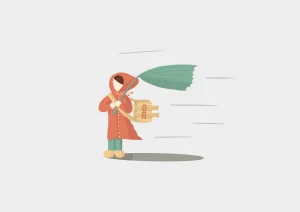
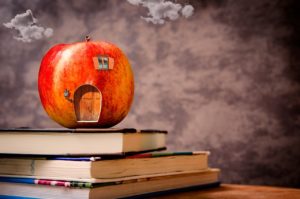 I recently read that there has been a surge of families
I recently read that there has been a surge of families 

 No, this doesn’t have to involve being around other people or visiting museums.
No, this doesn’t have to involve being around other people or visiting museums.

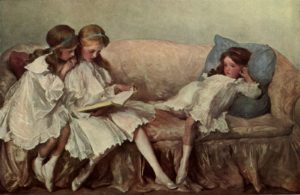
 As I’ve mentioned here before, I was homeschooled for the first several years of my education. One of the best parts of that experience was being able to read after my lessons were finished. There were times when Wyoming was far too snowy and cold of a place for a child to be wandering around outside in, so I read the entire afternoon and evening away on some of those wintry days.
As I’ve mentioned here before, I was homeschooled for the first several years of my education. One of the best parts of that experience was being able to read after my lessons were finished. There were times when Wyoming was far too snowy and cold of a place for a child to be wandering around outside in, so I read the entire afternoon and evening away on some of those wintry days.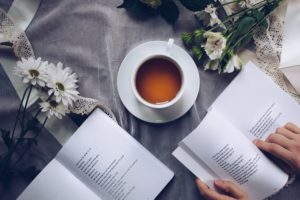 I no longer remember which genres I read during that thirty-book month, but I do remember the genre I became obsessed with shortly after that: poetry.
I no longer remember which genres I read during that thirty-book month, but I do remember the genre I became obsessed with shortly after that: poetry.
 Over the last decade or so, I’ve found myself gradually becoming more interested in nonfiction than I ever was before. My favourite high school English teacher used to talk about how much she enjoyed reading about things that really happened.
Over the last decade or so, I’ve found myself gradually becoming more interested in nonfiction than I ever was before. My favourite high school English teacher used to talk about how much she enjoyed reading about things that really happened. As soon as I outgrew the small space between the couch and the cabinet full of books, I moved onto a spot beneath my grandparents’ piano. (Have you noticed the pattern of my early reading years yet?)
As soon as I outgrew the small space between the couch and the cabinet full of books, I moved onto a spot beneath my grandparents’ piano. (Have you noticed the pattern of my early reading years yet?)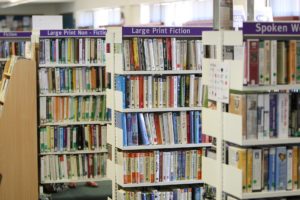 By far my favourite part of attending public school was getting to visit the school library. They had hundreds of books there, and you could check them out as often as you wanted to.
By far my favourite part of attending public school was getting to visit the school library. They had hundreds of books there, and you could check them out as often as you wanted to.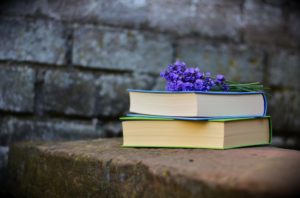 The best reading years of my childhood began when I was fifteen and we moved away from the countryside and into a small town.
The best reading years of my childhood began when I was fifteen and we moved away from the countryside and into a small town.